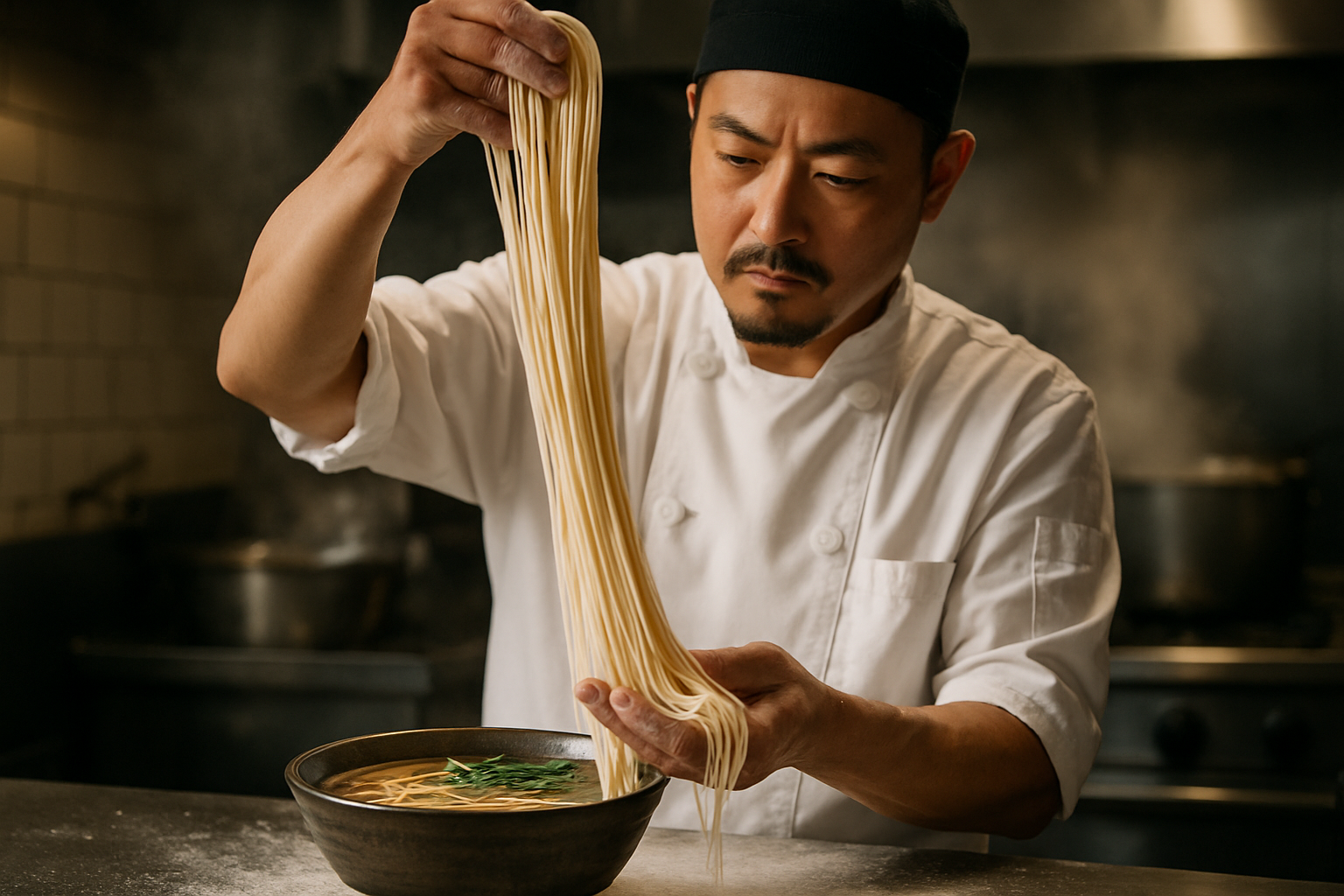Noodle Pulling: The Artistry Behind Hand-Pulled Noodles
Slurp, stretch, and savor the magic of hand-pulled noodles. This ancient culinary technique transforms simple dough into silky strands of perfection. Join us on a journey through the mesmerizing world of noodle pulling, where tradition meets innovation and every bowl tells a story of skill, patience, and flavor.

A Symphony of Texture and Flavor
Hand-pulled noodles boast a unique texture that machine-made varieties simply can’t replicate. The manual stretching process creates microscopic air pockets within the noodles, resulting in a springy bite and superior ability to absorb flavors from broths and sauces. These noodles are often served in rich, savory soups or stir-fried with an array of ingredients. The slightly irregular shape of hand-pulled noodles adds character to dishes, creating pockets that trap sauce and enhancing the overall eating experience. From the slippery smoothness of fine strands to the hearty chewiness of thicker varieties, hand-pulled noodles offer a textural journey that delights the palate.
From Street Food to Gourmet Kitchens
Once primarily found in humble street stalls and small eateries, hand-pulled noodles are now making waves in high-end restaurants around the world. Innovative chefs are incorporating this traditional technique into fusion cuisines, creating unexpected flavor combinations that honor the noodles’ heritage while pushing culinary boundaries. Picture delicate hand-pulled noodles tossed with truffle oil and wild mushrooms, or served alongside sous-vide meats in a modern take on classic noodle soups. This elevation of a street food staple showcases the versatility of hand-pulled noodles and their ability to shine in diverse culinary contexts.
The Science Behind the Stretch
The seemingly magical transformation from dough to noodle is rooted in food science. The repeated stretching aligns gluten proteins in the dough, creating a strong, elastic network. This structure gives the noodles their characteristic chewiness and allows them to be stretched to impressive lengths without breaking. The protein content of the flour, hydration levels, and even ambient temperature all play crucial roles in achieving the perfect noodle. Modern noodle artisans often combine traditional techniques with scientific knowledge, fine-tuning their recipes and methods to consistently produce noodles with ideal texture and flavor.
Preserving Tradition in a Modern World
As convenience foods gain popularity, there’s a growing movement to preserve the art of hand-pulled noodles. Culinary schools and traditional noodle shops are offering workshops to pass on this skill to a new generation. Social media has also played a role, with videos of noodle masters at work going viral and sparking interest in this ancient craft. However, the challenge lies in balancing tradition with modern demands for efficiency and consistency. Some innovators are exploring ways to partially mechanize the process without losing the essence of hand-pulled noodles, aiming to make this labor-intensive art more sustainable in today’s fast-paced culinary landscape.
Noodle Pulling Insights
• The dough for hand-pulled noodles typically rests for several hours or overnight to develop optimal elasticity.
• Experienced noodle pullers can create up to 256 strands from a single piece of dough in less than two minutes.
• The thickness of hand-pulled noodles can range from as fine as hair to as thick as a chopstick.
• Some regional variations include adding alkaline water to the dough for a distinctive flavor and texture.
• Hand-pulled noodles are known as “lamian” in Chinese, which literally translates to “pulled noodles.”
In conclusion, hand-pulled noodles represent a fascinating intersection of culinary artistry, cultural heritage, and gastronomic science. From their humble origins to their current status as a globally appreciated delicacy, these noodles continue to captivate food lovers with their unique texture and versatility. As we look to the future, the art of noodle pulling stands as a testament to the enduring power of traditional culinary techniques in our modern world. Whether slurped from a street-side bowl or savored in a gourmet creation, hand-pulled noodles offer a tangible connection to centuries of culinary wisdom, one delicious strand at a time.





